When Greg and I agreed on Mexico as our honeymoon destination we knew there was going to be some fantastic marine life to see. In preparation for this we decided it was time to learn to SCUBA dive.
We went for the basic ‘Open Water PADI ’ certificate, with the assistance of ‘Island Divers‘ on the Isle of Wight. This entry level qualification allows us to dive to 60 feet. Most marine life, coral reefs etc can generally be found within this depth anyway, so it’s the ideal one to start with.
It does, however, require both pool and open water sessions as well as passing a few theory tests. The pool and theory were no problem to either of us – we passed easily. Finding a time when the weather and water conditions in England were suitable for diving, when we are also both fully booked with work throughout the warmer months, was another story. Add to it that you cannot dive when you have blocked sinuses (Greg suffers from hay fever and I have a knack for catching colds!) and the time between us and the honeymoon started fast disappearing.
In the end, we had to bite the bullet and went to Lake Andark for our first of the two necessary open water dives. In January. To say the water was cold would be a huge understatement. If my memory serves, it was about 3 degrees.
Luckily our fantastic instructors took pity on us (they told us quite frankly that they weren’t getting in that water without a dry suit on and it seemed a bit harsh to make us do it if they weren’t willing to) and showed us how to be efficient enough in a dry suit to get by on our open water course. This worked a treat on Greg’s body. That stayed warm and dry – although his lips didn’t fare so well. Even a lip filler fanatic wouldn’t have wanted his huge, purple tinted cold induced swollen lips! Our instructors and I were quite bemused!
I was less lucky in the body department. I have somewhat skinny wrists and a skinny neck. This meant that every time I moved, a lovely cold trickle penetrated my suit, soaking me and my padded clothing beneath. Add to it that the algae was so thick, I couldn’t see anybody if they went more than a couple of feet away from me… it was an interesting introduction to open water diving. Despite this, the session was a success and we scheduled our final one to take place, just in time before our honeymoon.
Then Greg got earache. Which ear drops made worse. Turns out he got an ear infection most likely caused by the combination of temperature and sediments in the water. It was severe enough to give him a small perforation, which meant that diving was no longer an option (as with the infection he couldn’t equalise air pressure at depth).
Initially we were gutted. We had already booked to dive in four separate locations in Mexico. Luckily some of these could be changed to snorkelling trips instead, while others we had to cancel. It was also fortunate that the marine parts of our honeymoon were during the second half of the trip, giving Greg’s ear longer to heal, or all water activities would have been impossible.
One of the things we had initially booked as a dive but had to change to snorkelling was our trip to the Cenote Dos Ojos, and for those that don’t know what a cenote is, I will explain:-
A cenote is a natural pit, or sinkhole, resulting from the collapse of limestone bedrock that exposes groundwater underneath.
The meteorite that collided with earth about 66 million years ago, causing the chain of events which scientists attribute to causing the dinosaurs extinction can be found (if you go underwater and dig deep enough!) close to this part of Mexico. We also heard that these cenotes were a result of that meteorite. How could we pass up an opportunity to swim in them after hearing that!?
As well as this, cenotes were sometimes used by the ancient Maya for sacrificial offerings. In one documentary we watched, it explained that the Mayan pyramids are usually built over a cenote or near to a river. There is also usually a tomb inside the pyramids. This is to replicate sacred mountains as well as the cenote that runs beneath them.
This is a sacred place to the Mayans – they believe it to be the gateway to the afterlife. Many of the Maya used to perform a sort of pilgrimage to these sacred places and it would be replicated in the cities in the form of their great pyramids.
Some cenote are large, open pools, while others are caverns or cave systems. The water is usually clear, mostly due to being rain water filtering through the ground. When the cenote contains fresh rainwater but also connects to the sea, a halocline is created. The salt water meets the fresh water and it creates a blurry wall type effect. This in particular is, I think, the area which the Mayans believed led into the afterlife. They also believed that cenotes are home to demigods and water sprites.
All of these theories and beliefs fuelled my intrigue and desire to see them for myself.
The Cenote Dos Ojos, meaning two eyes cenote, is actually two cenotes connected by a 1,312 foot passageway. It’s famous for having the deepest known underwater cave passage at 387 feet deep. The cave system itself is also at least 200,131 feet in length. Add to it that the fact that the water maintains a very comfortable 24-25’C temperature throughout the year and is a great place to snorkel as well as scuba dive… it’s no wonder it’s so famous!
As we had originally booked to dive here we kept our guide, a lovely lady called Andrea from DivingPlayaDelCarmen.com, for the snorkel session. She kitted us out with wet-suits, fins and flashlights (we had our own snorkels and masks) and into the first of the cenote’s eyes we went.
This first Cenote was stunning. Quite deep in places and with stalagmite filled caves around the back and sides. The walls were decorated with fossil corrals and the water had a few delicate, beautiful, silver fish. As we dived underwater these fish were the only visual sign that we were in water at all – it was so perfectly clear. As we looked up at the surface it was a strange sensation. We could have been standing on land looking into the water rather than the reverse. As I ventured into the darker recesses towards the back of the Cenote I could see a line along the cavern floor- a line for the scuba divers to hold onto to guide them through the cave systems to the next cenote. I wondered if it would feel claustrophobic or fascinating. Likely both. I hope to return one day and find out.
Instead of going through the underwater cave system to reach our next Cenote we walked along pretty little jungle paths. Instead of going straight to the second eye, however, we went to a smaller, less visited Cenote.
This one had a sediment floor and pretty lily pads. It was home not only to fish but also to terrapins/ turtles. They were adorable little ones, more terrapin than big sea-living turtles. It was Greg’s first time seeing them in the wild and a very special moment.
Deciding we had intruded on the turtle long enough, we headed to the back of the cenote, where through a narrow maze of winding passages created by stalactites and stalagmites, at times only centimetres from our heads, was a bat cave. Lots of beautiful little bats flew around the cave and around our heads. For those of you that have watched our Mexico video, (Mexico: Mayan Mystery and Marine Majesty), it felt a bit like the bat cave in Calakmul if we had been standing in the centre of it! It was amazing!
There were also little silky string-like lines made by worms dangling from the stalactites, waiting to catch bugs for dinner. They were pretty (they seemed to glow around us) – but I didn’t fancy them in my hair!
**For any of you considering a trip to Mexico and to the Cenote Dos Ojos, to enter the bat cave you must be with a guide. To swim in the two eyes cenotes you don’t need one but to dive or enter the bat cave you do.**
The second eye cenote was another big, deep one. Open space, crystal water, caves along the edges and a larger, more open bat cave but home to a lot less bats.
No wonder the Mayans thought that the cenotes were spiritual, a place connected to their gods and the afterlife. It felt otherworldly and strange to me and I understand some of the science as to how they were created and why the water looks that way. Picturing the ancient Maya exploring cenotes without that understanding, without the diving or snorkel equipment… it’s not hard to imagine how it must have felt and appeared to them. It was certainly magical to me.
Thank you for reading, and safe travels.
Felicity
P.S.
If you enjoyed this blog post, please leave a comment and say ‘hello’!
For information on all of our projects, visit: www.gregandfelicityadventures.com
Follow us on Instagram at: https://www.instagram.com/gregandfelicity
Like us on Facebook at: https://www.facebook.com/GregandFelicityAdventures
There are various places you can watch our documentaries and series!
Seeking Cetaceans In Scotland: A two-part documentary about the work of the Cetacean Research and Rescue Unit as they work to help whales, dolphins and porpoises in the Moray Firth in Scotland:
Free in the USA on Tubi TV at:
https://tubitv.com/movies/678018/seeking-cetaceans-in-scotland
Free Worldwide on PlexTV at:
https://watch.plex.tv/movie/seeking-cetaceans-in-scotland
With a library card on the Hoopla service where applicable:
https://www.hoopladigital.com/title/15313766
Free in the USA on Xumo at:
https://www.xumo.tv/channel/99991731/free-documentaries?v=XM00ILOFXCKLUC&p=74071
Buy it without ads Amazon’s Prime Video at:
UK: https://www.amazon.co.uk/dp/B09RVWVFCV
USA: https://www.amazon.com/dp/B09RVWJGY1
(Greg and Felicity are donating half of our streaming income on this documentary to support the CRRU).
Available to buy on DVD (with £5 from each donated to the charity): https://ko-fi.com/s/73e469d114
ROMANIA: SEEKING DRACULA’S CASTLE: Our travel documentary looking into the history, legend and castles connected to Vlad Dracula III, sometimes known as Vlad the Impaler, and a journey around Romania:
Free Worldwide on Plex: https://watch.plex.tv/movie/romania-seeking-draculas-castle
Free (USA) on Tubi: https://tubitv.com/movies/579192/romania-seeking-dracula-s-castle
Prime Video (From £1.99, no Ads) (UK): https://www.amazon.co.uk//dp/B08RDPZP14
Prime Video (From $1.99, no Ads) (USA): https://www.amazon.com/dp/B08RDJR4F2
TURKEY: FAIRY CHIMNEYS AND UNDERGROUND CITIES: A travel documentary across Turkey, from the Fairy Chimneys and Underground Cities of Cappadocia to the ancient Greek ruins of Ephesus and Hierapolis:
Prime Video UK (From £2.49, no Ads): https://www.amazon.co.uk/Turkey-Fairy-Chimneys-Underground-Cities/dp/B09KKSZLRW
Prime Video USA (From $1.99, no Ads): https://www.amazon.com/Turkey-Fairy-Chimneys-Underground-Cities/dp/B09KK6VDJB
Free Worldwide on Plex: https://watch.plex.tv/movie/turkey-fairy-chimneys-and-underground-cities
Free (USA) on Tubi: https://tubitv.com/movies/579225/turkey-fairy-chimneys-and-underground-cities
Greg Chapman’s Magic Show: An eight-part series of magic and entertainment with Greg:
Free in the USA on Tubi at: https://tubitv.com/series/300008713/greg-chapman-s-magic-show
Free worldwide on Plex: https://watch.plex.tv/show/greg-chapmans-magic-show/season/1
Available to buy on DVD: https://ko-fi.com/s/7c1bc10a08
Mexico: Mayan Mystery and Marine Majesty: Filmed on our honeymoon in Mexico in 2019, our first travel documentary took us through the ancient sites of Teotihuacan, Uxmal, El Tajin, Palenque, Chichen Itza and Calakmul, and then on to see the whales of Magdalena Bay, whale sharks of La Paz, and more.
Watch free on YouTube: https://youtu.be/yfMpD868MHU
The Isle of Man: Railways, Castles and Seals: Our second travel documentary took us to the Isle of Man!
Watch free on YouTube: https://youtu.be/uCpUa6XEkbg
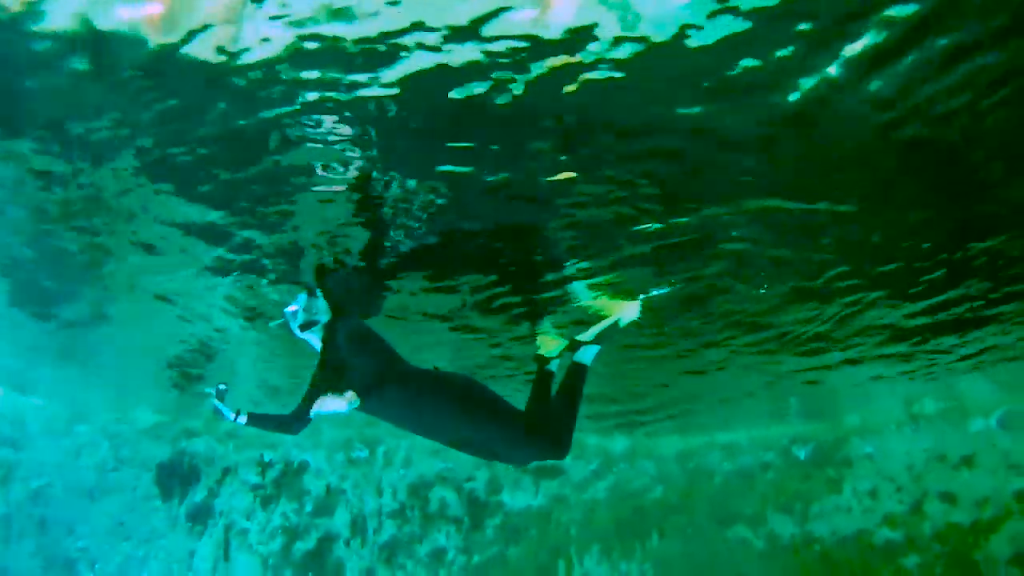
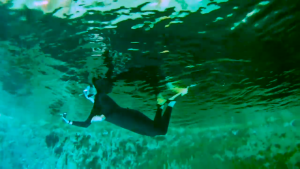
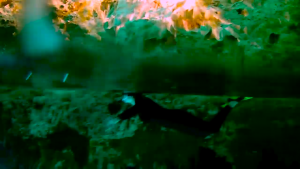
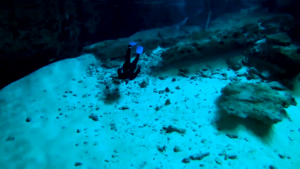
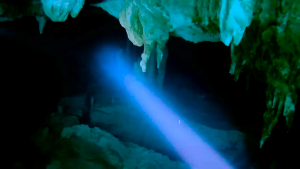
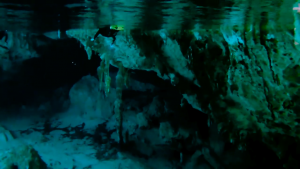
2 thoughts on “The Underwater World of Mexico: Part 1: SCUBA and Cenotes”